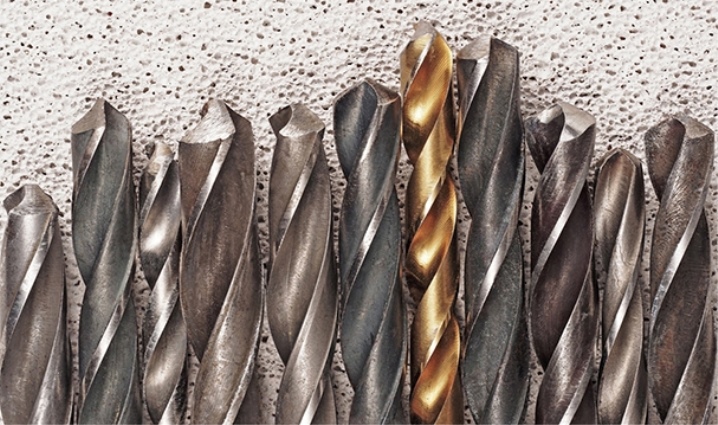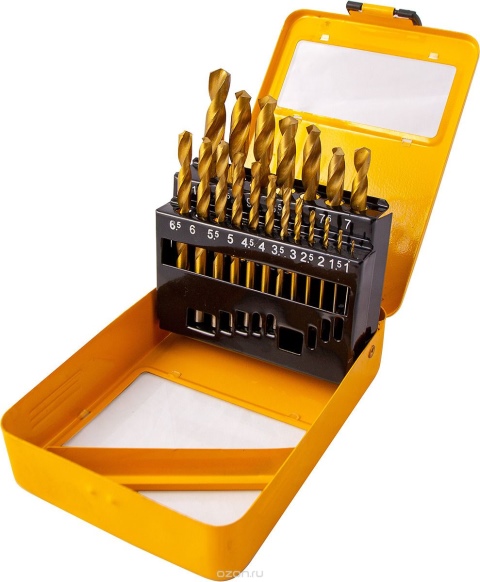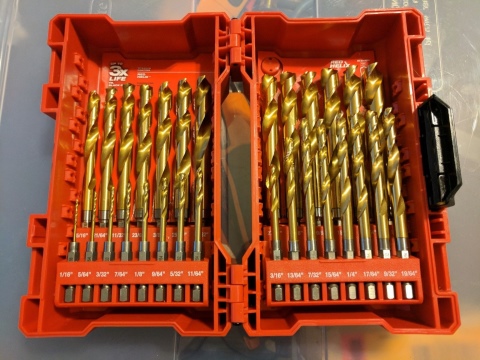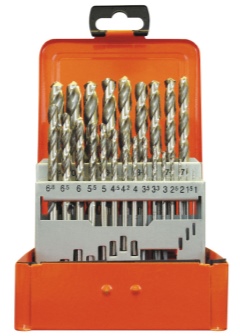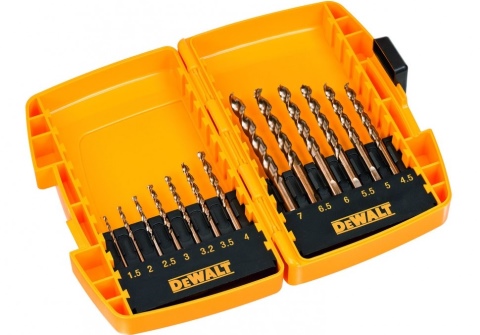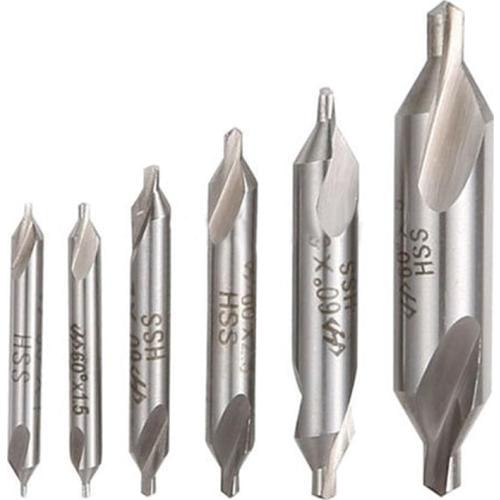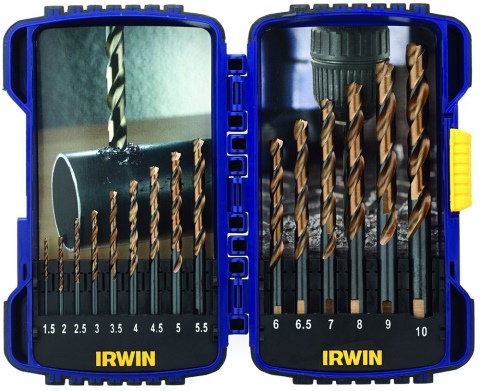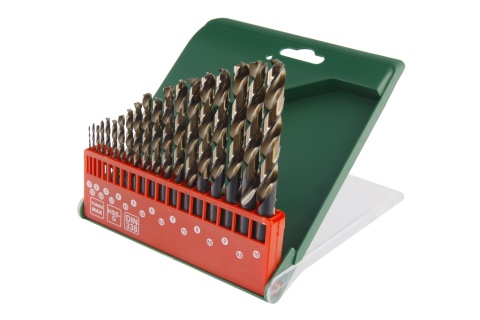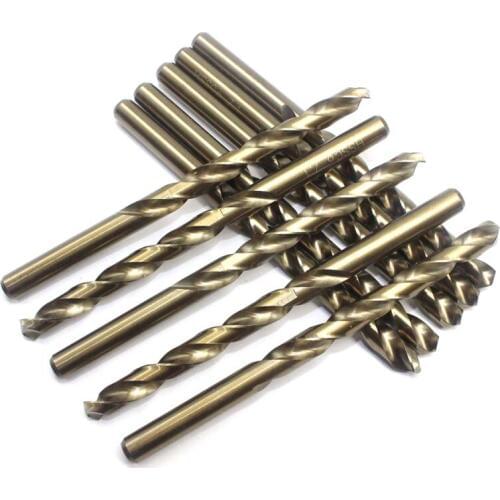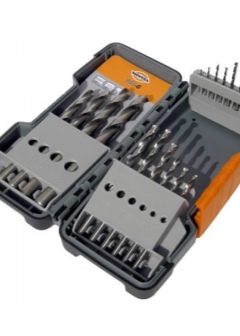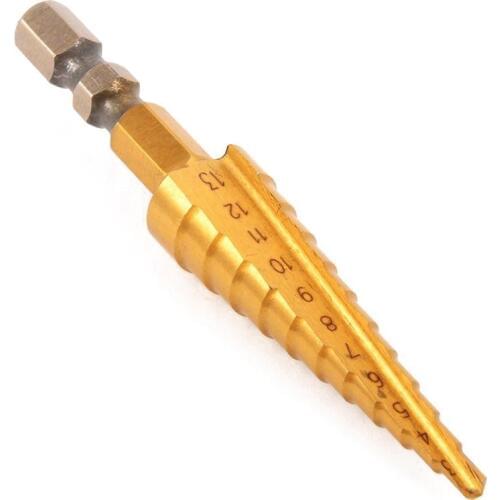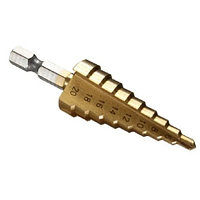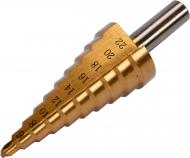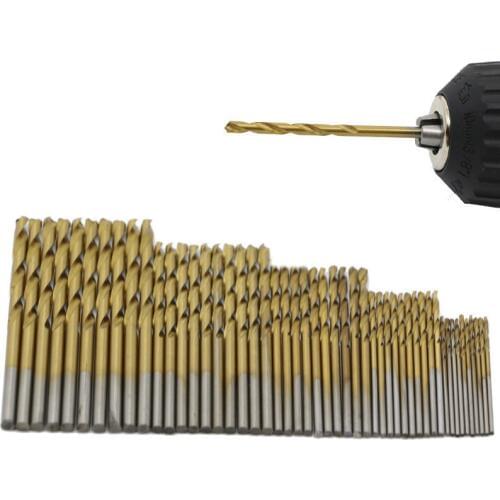Peculiarities
Drills consist of three conditional elements:
- cutting part - located in the front of the product and directly forms a hole in the material;
- the working part is located behind the cutting and must ensure the removal of chips from the place of work;
- shank - located at the back and intended for fastening the product in the tool (drill).
The hardness of the drill must be higher than that of the metal to be processed with it (at least 62 HRC). Drills must have a certain sharpening angle:
- for processing steel, cast iron and hard bronze - from 116 to 118 °;
- for works on soft bronze and brass - from 120 to 130 °;
- for copper - 125 °;
- for aluminum processing - 140 °.
Classification
Drills for metal are usually classified according to the following main characteristics:
- by design;
- by material;
- to size.
The sets of these products may also differ in the composition of the drills they contain. Let's consider each of these classifications in more detail.
Design
There are currently 4 types of drill designs.
- Spiral - cylindrical parts with a sharp tip and a spiral groove along the length.
- Stepped conical - each step on them corresponds to a certain diameter of the resulting hole. One drill can produce holes of different diameters, the depth of this hole will depend on the selected diameter. Such a tool is much better centered than a spiral one.
- Flat (feather) - are distinguished by a relatively low price, good alignment and high reliability. They can only be used to produce holes of relatively small diameter and shallow depth, since they very poorly evacuate chips from the working area.
- Drill bits - this option is used when you need to get a large hole in a relatively hard material.
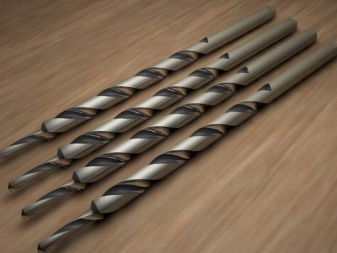
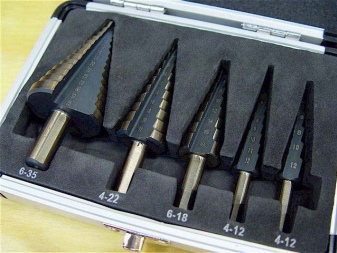


There are special options for twist drills.
- Elongated - used to make holes more than 5 times the tool diameter. They are distinguished by the presence of a double spiral channel, which is used to supply coolant to the cutting part.
- Centering - special products for creating holes for centering drills of large diameters (usually on machine tools). They differ in small length and diameter ranging from 0.25 to 5 mm.
- Threaded - cut a thread inside the hole.
- Left-handed - used for dismantling hardware.
- High-precision - allow you to perform work with a high class of accuracy.
The drill shank is:
- cylindrical (found in both Soviet and new domestic and foreign products);
- hex (typical for new foreign models);
- conical (the rarest format, more often found in CNC machines than in hand tools).
Material
According to the metal from which the borax is made, the following varieties are distinguished:
- steel (usually made of high-speed steel);
- from alloy steels (titanium and cobalt additives are common);
- carbide (usually carbide is used in the form of a coating or replaceable inserts in the cutting part).
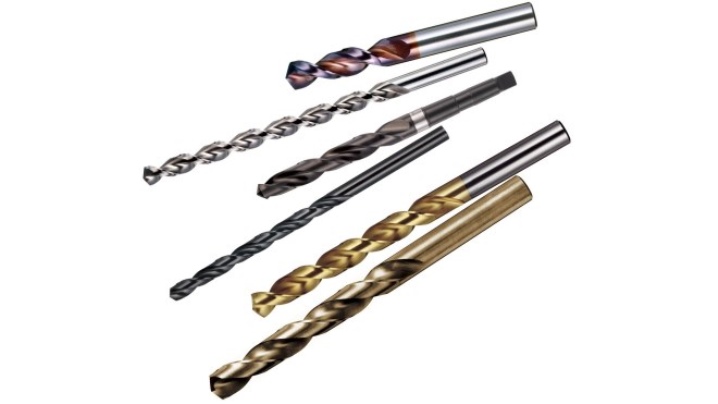
The size
GOST 10902-77 distinguishes the following standard sizes of drills:
- short - differ in diameter from 0.3 to 22 mm and length in the range from 20 to 131 mm;
- elongated - with the same diameter as short ones, they have a length from 131 to 205 mm;
- long - their length is from 205 to 254 mm, and their diameter is in the range from 1 to 20 mm.
Composition
The following standard sets of drill bits for metal processing are the most common:
- 3 pcs.- usually step drills with diameters of 4-32 mm, 4-20 mm and 4-12 mm are supplied in this way;
- 5 pieces. - usually sold in this way are inexpensive twist drills of small diameter for domestic needs;
- 6 pcs. - similar to the previous version;
- 8 pcs. - semi-professional sets, most often in the range of diameters from 3 to 10 mm;
- 13 pcs. - an extended semi-professional set, found in versions of different diameters with a step from 0.5 to 2 mm;
- 15 pcs. - similar to the previous one;
- 19 pcs. - a professional set, which usually contains drills with a pitch of 0.5 mm;
- 25 pcs. - contains all diameters applicable for hand tools, namely - 1-13 mm with a step of 0.5 mm;
- 29 pcs. - extended professional sets, most often in the size range 1-15 mm or 3-16 mm.
What does the color say?
Contrary to popular belief, the color of the drill does not provide an unambiguous indication of its material. So, gray tools can be made of low-quality steel (therefore, many craftsmen advise to avoid buying them), however, gray color can also be acquired with high-quality steel as a result of oxidation. Therefore, before you refuse to buy a set because of the gray color of the components included in it, it makes sense to study its labeling.
The same applies to black drills - this color can be a result of nitriding, oxidation or steam treatment, as well as coating. But the presence of a golden hue indicates that the product is made of hardened and tempered steel. Such products will have a slightly lower hardness, but much greater strength and reliability.
